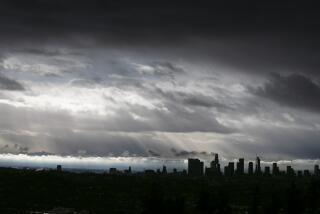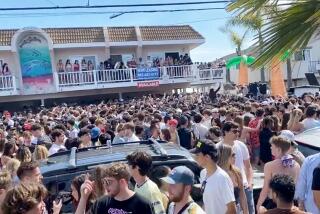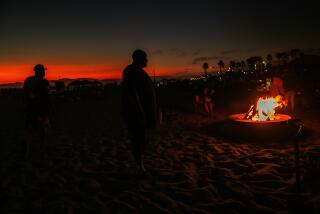Spring break is over: Miami Beach almost unrecognizable as partying ends
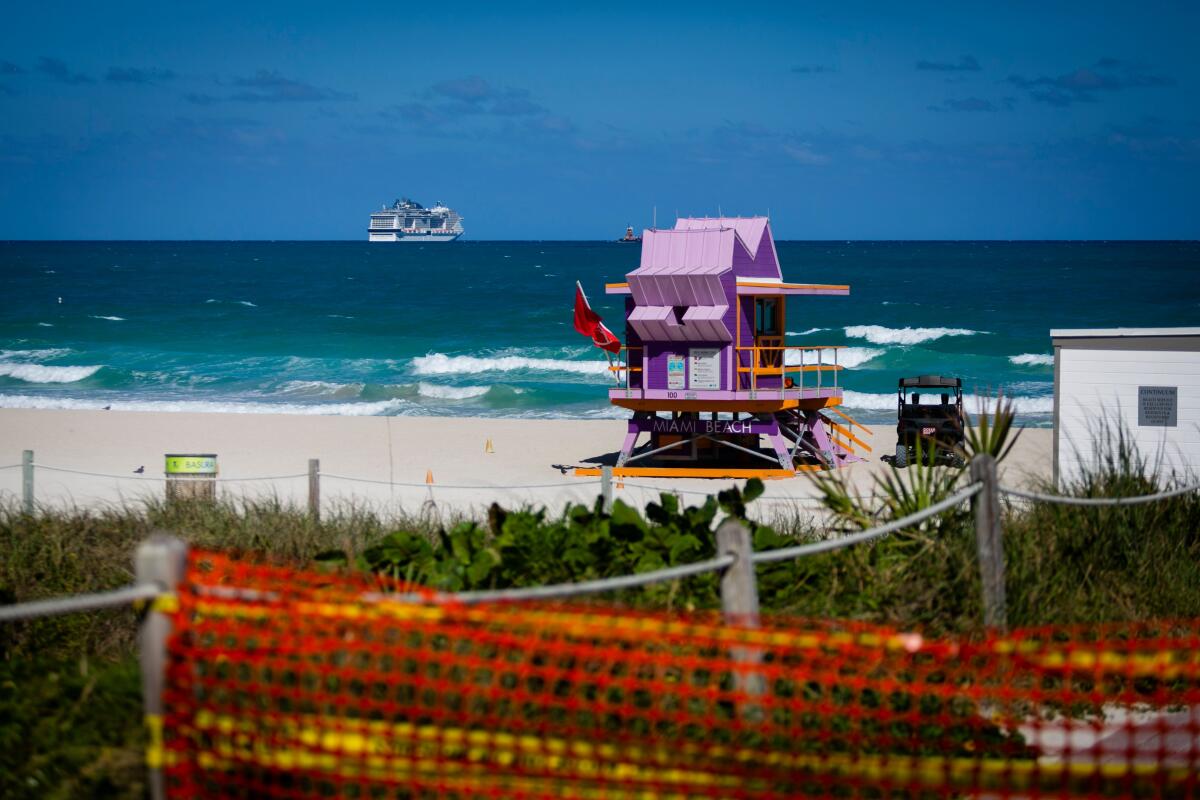
It was just a week ago that Felix Mohen landed in Florida, hopped in an Uber and headed straight for Ocean Drive, the famed South Beach promenade of open-air poolside bars, topless sunbathing and neon-lit Art Deco hotels across from 2½ miles of beaches that swell with thousands of revelers each March for spring break.
An 18-year-old French student enrolled at Hult International Business School in Cambridge, Mass., he came with four college friends for a quick escape from the winter in New England, where temperatures were still regularly below freezing.
By Thursday night, after learning that the semester was canceled, getting kicked out of two hotels that had shut down, and fielding frantic calls from his parents, he was nursing a Heineken in front of the Crescent hotel, a few minutes past a new 11 p.m. curfew.
“We’ll never see Miami like this again,” said Mohen, 18, as he watched police barriers and officers block the beach walkways across the street. “At least we saw the sand before they told everyone to leave.”
Miami Beach — the South Florida city famous for its nightlife that at once attracts budget-minded students for its cheap hotel rooms and plentiful booze and high-end travelers for its glitzy hotels and designer stores — is unrecognizable amid shutdowns to prevent the spread of the coronavirus.
Bars and restaurants have gone dark. Police guard the beaches, chasing off intruders. Shirtless rollerbladers and skateboarders are now fully clothed with gas masks over their faces, if they’re out at all.
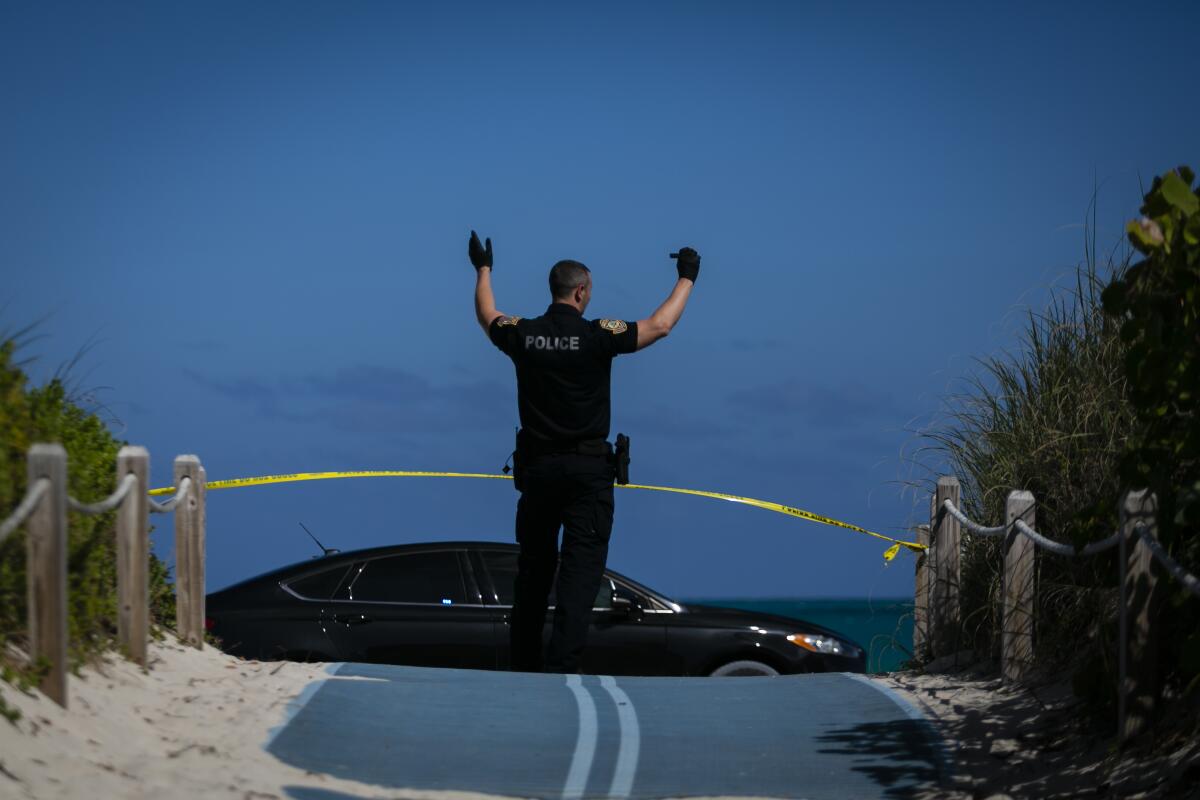
“It’s like there’s been a hurricane,” said Vitaly, a local resident who took a stroll with a friend early Friday morning up Collins Avenue, a street of dozens of hotels that’s usually teeming with tourists. “I pay a lot of rent to be here, and we can’t even go to the beach.”
He did not want to share his full name because he was violating curfew in the city’s entertainment district.
Until days ago, life went on as normal in South Beach, the southernmost and most tourist-heavy neighborhood in the 88 seaside blocks of Miami Beach, a city of 92,000 across Biscayne Bay from the city of Miami. Mango’s, a Latin-themed cafe on Ocean Drive known for its mojitos and muscular male dancers, bustled with salsa music. At Wet Willie’s, bartenders flicked thick rum-infused frozen cocktails — “Call a Cab” is one of them — from Slurpee-like machines in to-go cups. Palace, a famed gay bar, still caused bottlenecks on the sidewalk with its dancing drag queens.
And the beaches were packed with students and visitors, despite attempts by state and city officials to limit crowds and encourage social distancing.

By Monday, the mayor of Miami Beach had shut down the most popular 10-block stretch of beach in his city.
“Spring break is canceled,“ he declared. Still, crowds diverted north and south, and international media reports caused a public relations nightmare for city and health officials.
“Selfish spring breakers refuse to let deadly illness get in the way,” said the Daily Mail of London.
On Tuesday, Florida Gov. Ron DeSantis, a Republican, ordered all bars and clubs in the state to shut for at least 30 days. But he faced criticism for not doing the same for all beaches and only ordering a 10-person limit with six-feet distancing at gatherings.
The decision left individual cities and counties to make the call, with Miami-Dade ordering all beaches closed on Thursday.
By Friday morning, DeSantis did the same for Broward and Palm Beach counties, the two counties north of Miami-Dade.
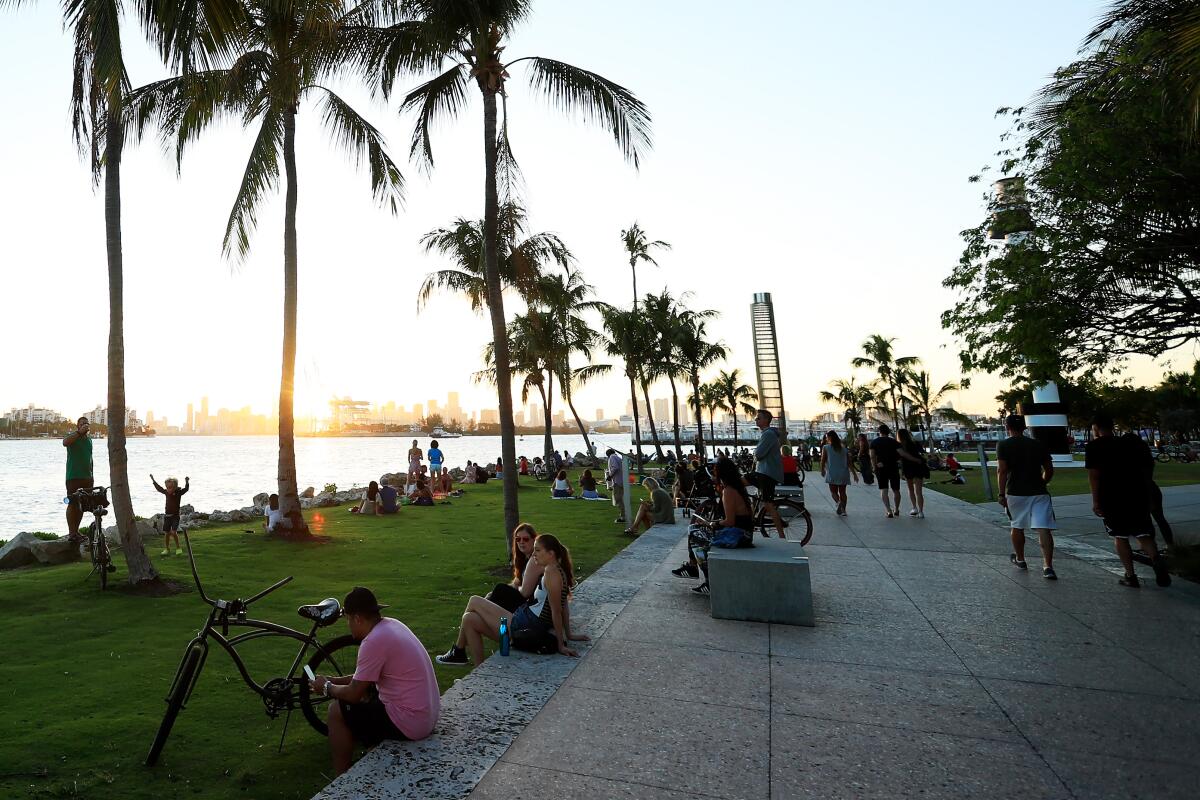
On the same day, the state’s health department released its updated numbers. Ten people had died from the coronavirus in Florida out of a total of 520 confirmed infections. Miami-Dade, which includes Miami Beach, had 113. Broward had 124.
At least nine infections have been linked to people who attended Winter Party, an LGBTQ festival that took place in early March in South Beach. Last Friday, Miami Mayor Francis Suarez became one of the first public officials to confirm he had the virus. He believes he was infected after attending an event with a Brazilian government official who also tested positive.
Eugene Riley, a University of Maryland senior who was visiting South Beach on spring break this week, said he agreed with the closures.
“We’re not those spring breakers who you see in videos that are totally self-absorbed,” said Riley, who was smoking a cigarette with three friends, each sitting several feet from the other, in front of the Parisian hotel on Collins Avenue.
“We already got to go to the beach. We’re not having the most typical spring break, but we’re fine with it,” said Riley, who said he went on a boat excursion with his friends in lieu of the sand.
Since school was canceled, he had planned to visit his grandparents in Bonita Springs on Florida’s Gulf Coast afterward. He’s now decided against it.
“It’s not worth it. We all have parents and grandparents, and we’re worried about them, too.”
More to Read
Start your day right
Sign up for Essential California for news, features and recommendations from the L.A. Times and beyond in your inbox six days a week.
You may occasionally receive promotional content from the Los Angeles Times.

